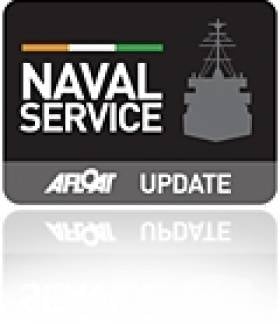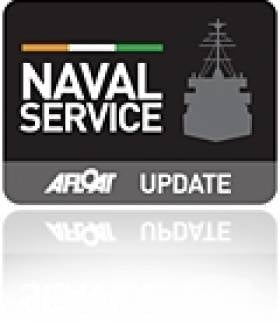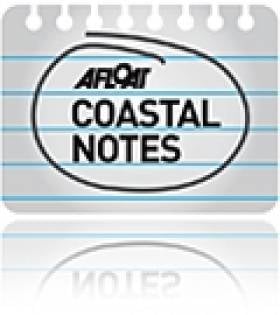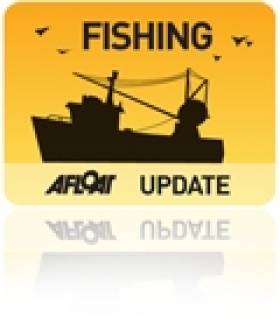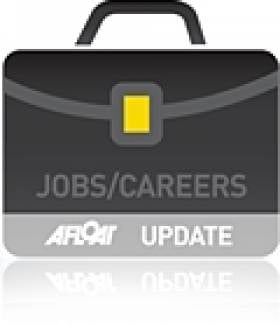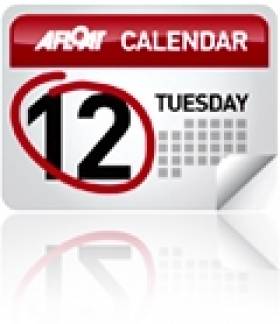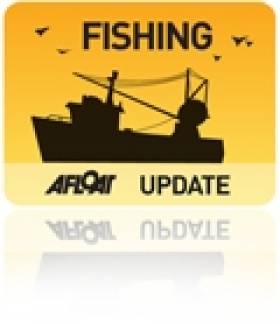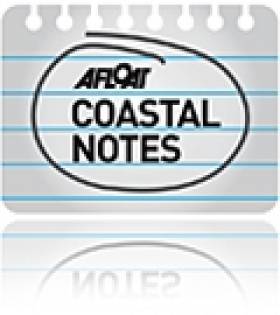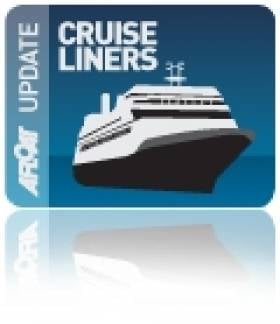Displaying items by tag: Fishing News
Battle of Brexit Boils Up Across Irish Sea on ‘Bloomsday’
#BrexitTradeIrelandUK – An Taoiseach Enda Kenny is on a two-day visit to the UK to encourage support from the Irish diaspora to vote 'Remain' in the EU Referendum, when he visits Liverpool and Manchester, this follow’s yesterday Thames flotilla face-off , writes Jehan Ashmore.
The opposing sides of the Brexit debate involved rival flotillas from Sir Bob Geldof and Nigel Farage, where the focus centred on the EU Common fisheries policy, one of a plethora of fundamental topics in which the British electorate face. The nation goes to the polls on the EU Referendum this day next week.
Sir Bob Geldof of the ‘Remain’ camp on board the Sarpedon, traded insults with Nigel Farage, UKIP Leader and one of the high-profile campaigners who is advocating for the UK to ‘Leave’ the EU.
Speaking on RTE Radio I’s Ryan Tubridy Show this morning from London was an exasperated Geldof who said, “I think Britain’s going out". On the question of Ireland, he added “I would say they’re going out which means a border between North and South – a police border again, and the consequences of that – the smuggling and everything else.
The ‘Boomtown Rats’ frontman and originally a resident of Blackrock, Co. Dublin, also claimed the trawler vessel Farage was on board, Christina S (72m pelagic trawler) was involved in a £63m fishing fraud.
Geldof also appealed to the 5.5million Irish, both direct descendents and immigrants in the UK to back the ‘Remain’ campaign, given the UK is the 5th largest economy in the world. He also added the benefits of the EU to unite, despite its democratic deficit and against the backdrop of an increasing ‘fragile’ world.
The armada display between both sides involved around 30 fishing vessels of varying sizes, where larger trawlers came alongside the permanently moored HMS Belfast in the Pool of London. Only last week at the same mooring, RMS St. Helena made a unique first time visit to the capital before making a final voyage from the UK to her namesake island in the South Atlantic.
Smaller fishing craft, however headed further upriver, beyond Westminster Bridge to converge off the banks lining The Houses of Parliament. This led to further outbursts by the figures of the debate to coincide with Prime Minister's Questions inside the palace.
Navy Detain French Fishing Boat off Kerry Coast
#FisheryDetention - Naval Service OPV LE Niamh (P52) has detained a French fishing boat about 30 nautical miles off the coast of Valentia, Co Kerry, reports the Irish Examiner.
The fishing vessel was detained for an alleged under-recording of catch and is to be escorted to Castletownbere, where it is expected to arrive this morning and then handed over to the Gardaí.
Foreign Fishing Vessels Detained off Castletownbere
#FISHERY DETENTIONS – With less than a fortnight into the month, the Naval Service has detained two foreign fishing vessels for alleged breaches of fishing regulations.
Last week the L.É. Aoife (P22) detained a Spanish registered fishing vessel approximately 20 nautical miles west of Mizen Head. The vessel was escorted to Castletownbere and handed over to the Gardaí.
The second detention occurred the week before, again involving the L.É. Aoife which detained a French registered fishing vessel approximately 60 nautical miles south of the Co. Cork fishing port. Likewise this vessel was also handed over to the relevant authorities.
These latest detainments by the Naval Service bring the total to 20 fishing vessels so far this year.
Screening Shown of Unique Lives Lost at Sea Ceremony
#MARINERS WITH MEMORIES – At the weekend representatives of the maritime community, relatives and visitors alike attended a screening of the 'Mariners with Memories' ceremony, which was shown in the Maritime Museum, Dun Laoghaire.
The ceremony which took place in Bray Harbour last July, is unique in that it recognises to all those lost to sea throughout the world and especially to those whose grave is the sea.
Shot by Colm Fynes, the film documented the day's proceedings with tributes made at the Co. Wicklow harbour and the flotilla that followed with floral tributes carried out close to the shore.
Captain Tony O'Grady who organised the Mariners with Memories ceremony, thanked all those to the museum and the support of the Maritime Institute of Ireland, whose newly renovated museum was a particularly apt venue, being the former Mariners Church.
Some of the relatives who attended the memorial event in Bray were also at the Dun Laoghaire screening and where they gave moving tributes to loved ones.
Commenting on the poignancy of the screening, Captain O'Grady referred to the on-going tragic events in Glandore Harbour and off the Italian island of Giglio.
He added that those involved in the various services off the West Cork fishing harbour would of liked to have attended but given the circumstances, all the resources were required at the scene.
It is hoped that following the inaugural ceremony, that Mariners with Memories will become an annually held event and the close relationship with the museum continues.
The museum which was especially opened for the screening will remain closed throughout the winter months though is open on an invitation only basis. Officially the museum is due to re-open this Easter, to keep posted of further developments visit www.mariner.ie
Fish Processing Trawler Calls to Dublin Port
#FISH PROCESSING- An unusual type of vessel to visit Dublin Port was the Faeroe Islands-flagged fish processing vessel Naeraberg (KG-14) which made a brief call this week, writes Jehan Ashmore.
The 3,181grt vessel built in 1983 at Harlingen Scheepswer in The Netherlands, berthed at the Coal Quay on the south docks. This berth is normally used for cargo such as molasses and loading scrap metals and where vessels occasionally call to collect supplies and parts.
Large fishing vessels visit the port though primarily for dry-docking purposes, notably in the case of the Killybegs based Antarctic (D97). The vessel is one of several operated by Arctic Fish Sales, a fresh fish trading company in operation over the last two decades.
She called to the port during late Summer, to the single-graving dock facility at Dublin Graving Docks. The facility can be divided into two separate chambers so to accommodate ships simultaneously.
Occasionally graduates may be required to assist with general laboratory duties and will also support the work of the Fisheries Science Services teams. For further information please download the full job description click this LINKand other stagiare programmes.
Duration of Contract: This temporary Stagiaire Graduate Training contract will be issued on a fixed-term, fixed-purpose basis for up to 50 weeks with a six-month probationary period.
How to Apply: A CV and letter of application can be posted to Human Resources, Marine Institute, Rinville, Oranmore, Galway or sent via email to [email protected]
Applicants will be short-listed on the basis of the information contained in their letter of application and CV. Please ensure that applications for this training opportunity use the reference MI-FSS Nov.2011
The closing date for all applications is Friday 18th November 2011 at 5pm. Late applications will not be accepted. It is the responsibility of candidates to ensure that their application is received on time. Interviews will be held during week commencing 28th November 2011. It is the responsibility of applicants to make themselves available for interview on the allotted date.
Photo Exhibition: People of the Sea / Gens de la Mer
Gilles Perrin selected his subjects by visiting harbours and piers in locations such as Cobh, Baltimore, Castletownbere and Schull. The work was conducted through the Artist in residency programme at Sirius Arts Centre, Cobh and later by a similar residency position at the West Cork Arts Centre which took place over a few months in 2007 & 2008.
People of the Sea is organised in partnership with Veolia Environnement, also the name given for a new MOD70 class (Multi One Design). Veolia Environnement is one of only 12 such high-spec performance yachts which visited Dublin Bay in the summer calling to Dun Laoghaire and a transit of Dalkey Sound (PHOTO's). She was in Irish waters under the skipper Roland Jourdain and crew ahead of her first test, the Fastnet Race held in mid-August. To read more about Veolia Environnement click HERE and also www.canyousea.com/en/
The other participants of the exhibition which have lent their support are the Sirius Arts Centre, The Arts Council, Cork County Council and The West Cork Arts Centre, and iophotoworks. For more information about Perrin who has a master's Degree in photography visit www.art-contemporain.eu.org/perrin/
- Schull
- Baltimore
- Cobh
- castletownbere
- Dublin Bay News
- Dun Laoghaire Harbour
- Fishing News
- Cork County Council
- Sailing news
- Dalkey Sound
- Veolia Environnement
- French Photographer Gilles Perrin
- Gilles Perrin
- People of the Sea/Gens de la Mer
- Alliance Francaise Dublin
- French Cultural Centre Dublin
- Irish Fishing Harbours
- Sirius Arts Centre
- The Arts Council
- West Cork Arts Centre
- The Fastnet Race
- MOD70 class
- Multi One Design
- Irish Fishing Industry
- Roland Jourdain
‘Angelus’ Trawler Also Appears On Pierside Gallery
Apart from the mural of the trawler (click HERE) there are a wide variety of vessels represented from general cargo-ships and the inclusion of STV Asgard II and the World's last ocean-going paddle-steamer P.S. Waverley. These vessels have too berthed alongside the adorned eastern breakwater where spectators flock to see the start of the biennial Round Ireland Yacht Race which was held last year.
The photo of the trawler was taken on a previous call at the Packet Quay, Wicklow and not Arklow as stated. The Packet Pier is the most used commercial quay in the Co. Wicklow port, where timber and scrap-metal cargoes are relatively common. For example the Arklow Rebel which loaded scrap-metal bound for Liverpool, to read more click HERE.
Ireland’s Countdown to Rocket-Ship Launch!
The RLM which stands for "Ridiculously Large Missile" is the second-largest civilian rocket ever launched in Ireland. In fact the organisers have built a larger one called the BFM: that's "Big Fat Missile".
The spectacular event has previously taken place on the last Sunday of each month since April. Today's launch will be the fifth and final blast-off of this year's rocket season.
Returning to earth, the museum located in the old coastguard station overlooks Greencastle harbour, which has one of busiest fishing fleets in Ireland.The maritime museum and its planetarium will also be open today. For summertime opening hours and admission fees information Tel: (074) 9381363 or visit http://www.inishowenmaritime.com/about.shtml
Greencastle is also conveniently connected by a 15-minute car-ferry service across Lough Foyle to Magilligan in Co. Derry. The route is served by the Foyle Venture, for ferry times and fares visit www.loughfoyleferry.com/
Small Luxury Cruiseship Visits Killybegs
In 2004 Killybegs received a significant boost in the completion of a €50m outer harbour with berthing quays totalling 350-metres long so to accommodate the north-west fleet and to include the 'supertrawlers'.
Despite the major port infrastructural investment, Killybegs has seen declining fortunes in the fish industry though in recent year's new business from the offshore exploration and cruise ship industries has assisted in generating new revenue.


























